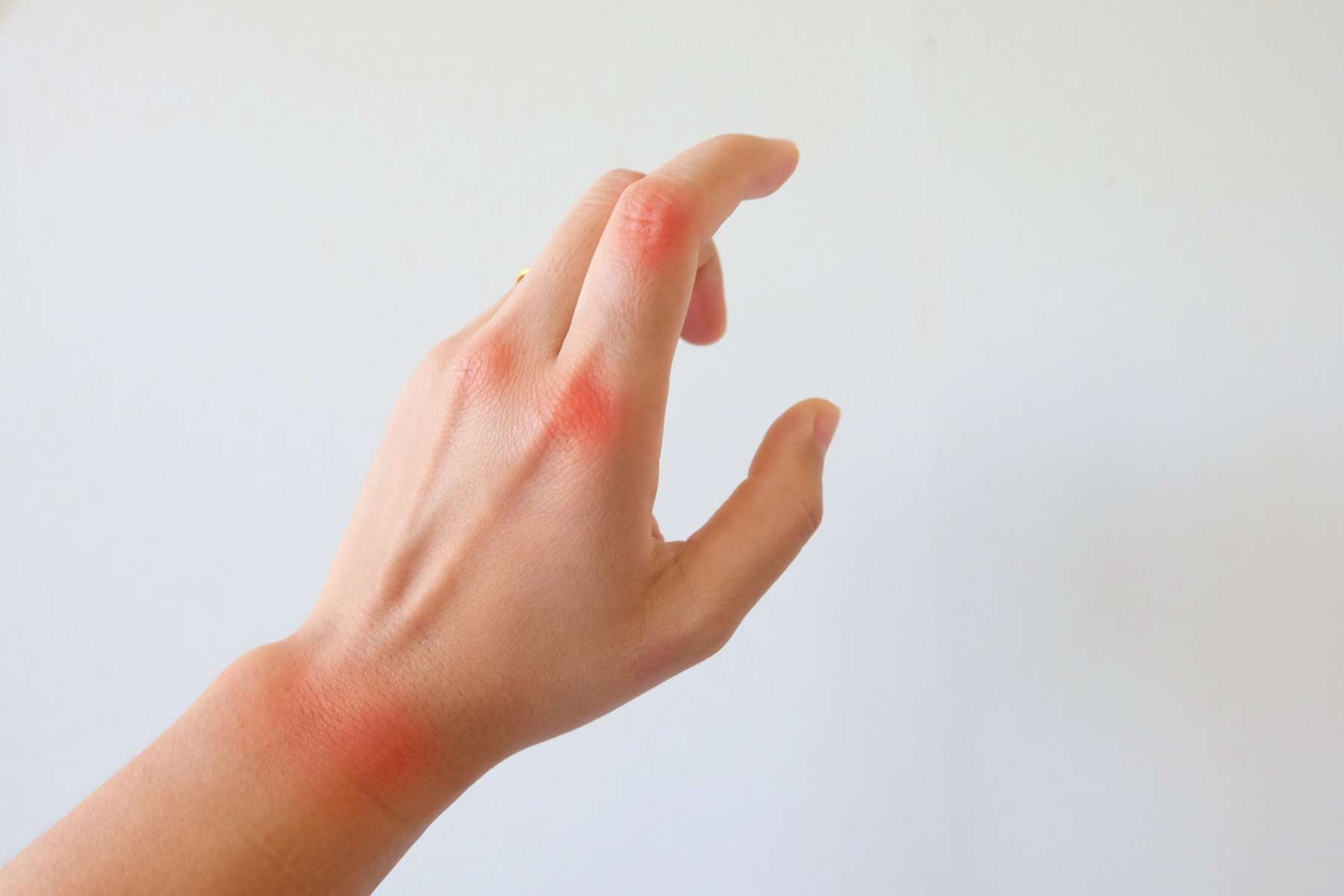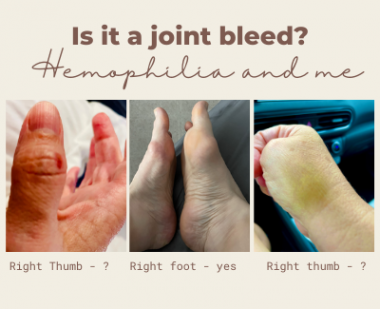Should I Infuse?: The Challenges of Determining If I Have a Bleed

Schira/Shutterstock
I cut my thumb above my knuckle a few weeks ago. It didn’t seem like a big deal, but five Band-Aids later, I began to wonder. A few hours later, I noticed my knuckle was swollen, painful, and a bit blue. My thumb wouldn’t bend, and the swelling extended down to the base of my thumb. Was this a joint bleed? I had no idea.
I have mild hemophilia B and von Willebrand disease. When it comes to joints and muscles, I have difficulty determining when I am experiencing a bleed. I would think those with severe hemophilia don’t share this phenomenon. They may take concentrates of factor VIII or IX on a regular basis to prevent bleeding.
Severe bleeds tend to be readily apparent and can be life-threatening. A severe bleed is like a burst pipe gushing water inside your wall. Less severe bleeds are akin to the damage caused by a drippy pipe. I realize now that I’ve had less severe bleeds throughout my life. Most I brushed off, but as I get older, my body is rebelling.
The primary treatment for hemophilia B and von Willebrand disease is replacement therapy. Infusions into a vein supply the deficient factors. Recently, my hematologist suggested I infuse weekly to prevent bleeding — a therapy called prophylaxis. But I am a big chicken. My bleeding disorders have caused me life-threatening situations, but the treatment has, too!

Possible bleeds. (Photo by Jennifer Lynne)
The happy foot
My right foot has been a target of my hemophilia for the past five years. Orthopedic boots fill my closet, and pictures of a swollen and purple foot fill my iPhone. Thanks to orthotics, ice packs, and supportive shoes, my foot became “acceptable.” I was able to walk a few miles without significant problems. My foot was happy enough.
The unhappy foot
My happy foot came to a crashing halt earlier this year. A Cadillac Escalade darted in front of my beloved Toyota Prius. I slammed down hard with all my might on the brake pedal. Smashing into the Escalade felt like an electric shock shooting through my foot. Immediately my foot tingled and kind of hurt, but I could walk, so I wasn’t alarmed. I told the police officer and my friends and family that I was OK.
Soon, it became evident that my foot was not OK. I noticed swelling, discoloration, and a tingling sensation. A thought crossed my mind: Is this a bleed? What else could it be?
My mom suggested I see her podiatrist, who diagnosed a minor break in the ball of my foot. Back to the boot. But could I have a bleed? I asked the podiatrist, who didn’t know. I am accustomed to looks of bewilderment when discussing hemophilia with medical professionals. Yes, women can have hemophilia!
My foot began blowing up like a Macy’s Thanksgiving Day Parade balloon. (See photo above.) Frustrated, I exchanged pictures and symptoms with my hematologist’s office. The answer came back: Yes, it looks like a bleed. Did I remember how to infuse factor?
To infuse or not to infuse
Though I was diagnosed at age 10, I did not learn how to infuse factor replacement products until my 50s, and I am not good at it. I usually watch several YouTube videos to get my confidence up. Hitting a vein usually takes me several tries. Because I have two bleeding disorders, I sometimes need to do this process twice.
I still don’t know if my thumb injury was a bleed, but I chose not to infuse. Possibly as a result, my thumb no longer bends like it used to. I can no longer squeeze bottles without some pain, and it’s still a bit swollen. I’ve even purchased a vertical mouse for my computer to compensate for my malcontent thumb.
My gut tells me that yes, it was a bleed. And next time, I should be quicker to infuse.
***
Note: Hemophilia News Today is strictly a news and information website about the disease. It does not provide medical advice, diagnosis, or treatment. This content is not intended to be a substitute for professional medical advice, diagnosis, or treatment. Always seek the advice of your physician or another qualified health provider with any questions you may have regarding a medical condition. Never disregard professional medical advice or delay in seeking it because of something you have read on this website. The opinions expressed in this column are not those of Hemophilia News Today or its parent company, Bionews, and are intended to spark discussion about issues pertaining to hemophilia.








Paul Clement
Hi Jennifer. Can you share with us you FIX level and what sub-type of VWD you have?
Jennifer Lynne
Hi Paul - thank you for your comment! My FIX level is 30% but fluctuates. I have type 1 VWD with a factor 8 level of 50% (this fluctuates too).
Paul Clement
With multiple bleeding disorders, it must be difficult to determine how to treat a bleed! With blood type O which you have, FVIII and VWF levels are lower (on average, about 25%). I would imagine your even lower FVIII level is due to lower VWF level as a result of VWD? And how do you know which bleeding disorder is contributing to a bleed? Do you use DDAVP for the low FVIII/VWF levels?
Interesting also is that your FIX level varies, as FIX level is not influenced by hormones as is FVIII and VWF. Were you diagnosed and treated at an HTC?
Jennifer Lynne
Thanks for your questions! Yes - it is very challenging to determine how to treat a bleed! My bleeding is sometimes more severe than a typical mild because of both disorders combined. I don't know which deficiency is causing a bleed when it happens. DDAVP didn't work well for me. I have both Humate P and Benefix on hand. I usually infuse the Humate P and add Benefix if the Humate P doesn't do the trick. (In a future column, I will explain why I don't infuse both at once). I have no explanation for why my FIX level fluctuates. The lower FVIII is due to the VWD. I was diagnosed at a HTC in Milwaukee and now receive treatment at a HTC in Florida.
Andrea
Oh my gosh- I feel like you have read my thoughts and are typing them out….
Women CAN and I do too.
Send me a message so we can chat more!
Jennifer Lynne
Hi Andrea! Thank you for reading. I am sorry you are a bleeder too. Navigating these issues is certainly a wild ride!